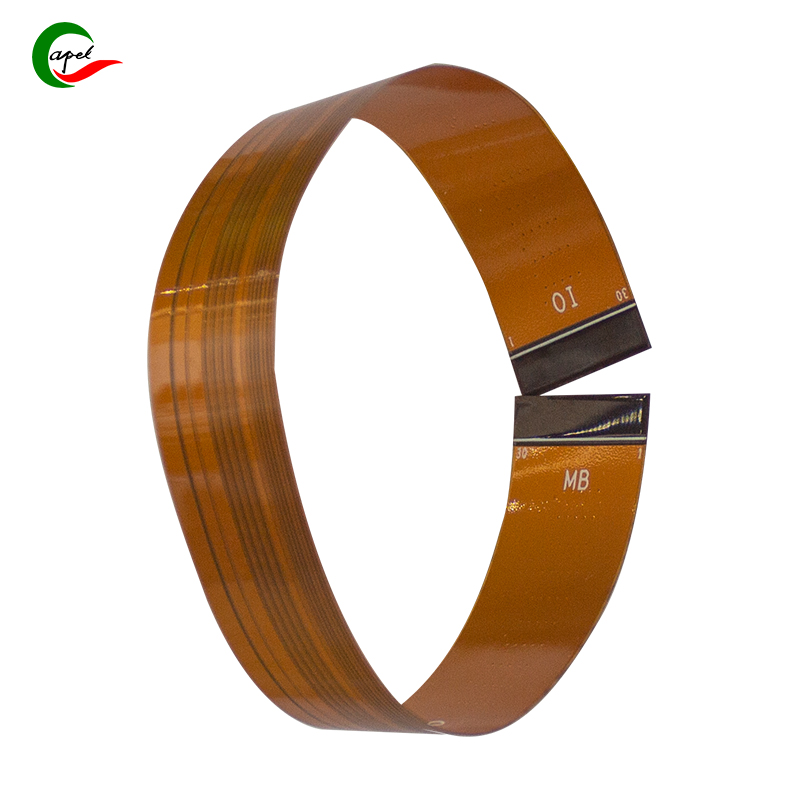5G Device FPC: Solutions for High-Frequency Transmission
Date: 2025-09-18
5G is all about speed—downloading a movie in seconds, streaming 4K video without buffering, or connecting hundreds of devices at once. But that speed relies on tiny flexible PCBs (FPCs) inside 5G phones, routers, and base stations. These FPCs have to carry signals that zip along at 28GHz (and higher)—far faster than the 4G signals of the past. Ordinary FPCs? They turn those fast signals into garbled messes.
The problem isn’t that FPCs can’t handle 5G—it’s that they need to be tweaked for high-frequency chaos. Below’s a simple breakdown of why 5G FPCs are tricky, the key fixes that make them work, and how these small changes keep your 5G connection fast and steady.
High-frequency 5G signals are delicate—think of them as tiny, fast-moving waves. Ordinary FPCs disrupt these waves in three big ways:
-
Signal loss (attenuation): 5G signals weaken quickly as they travel. Cheap FPC materials (like low-grade polyimide, PI) soak up signal strength—by the time the signal reaches the antenna, it’s too weak to use.
-
Interference (noise): 5G signals are easily disrupted by nearby power lines or other electronics. Ordinary FPCs don’t block this noise, so your 5G connection drops or slows down.
-
Impedance mismatch: 5G needs consistent "electrical resistance" (impedance) along the FPC. If the FPC’s trace width changes or the material shifts, the signal bounces back instead of moving forward—like water hitting a kink in a hose.
5G FPCs start with better materials—no cheap shortcuts here:
-
High-performance PI substrate: Use PI with a "dielectric constant" (a measure of how well it carries signals) of 3.0–3.5. Cheaper PI has higher values (4.0+) and saps signal strength. This high-grade PI keeps 5G waves strong for longer.
-
Thin, pure copper traces: 5G signals travel along the surface of copper (the "skin effect"). Use 0.01mm ultra-thin copper foil—thicker copper doesn’t help, and it adds weight. Pick oxygen-free copper (OFC) too—it’s purer, so signals don’t get stuck on impurities.
-
Low-loss coverlay: The protective film (coverlay) on the FPC should also be high-grade PI (not polyester). It acts like a "shield" for signals, cutting down on loss as they travel.
Impedance mismatch is 5G’s worst enemy—here’s how to avoid it:
-
Stick to one trace width: If your FPC has a 0.2mm-wide trace for 5G, keep it 0.2mm everywhere—no sudden widening or narrowing. Even a 0.1mm change can bounce signals back.
-
Add a continuous ground plane: A thin layer of copper (the ground plane) runs under the signal traces. It acts as a "reference" for 5G waves, keeping impedance steady. Make sure it covers the entire FPC—no gaps, especially near bends.
-
Smooth bends, no sharp kinks: 5G signals hate sharp angles. If the FPC needs to bend (e.g., in a phone hinge), use a 5mm+ bend radius. Sharp kinks change impedance and break signals.

5G signals are easily drowned out by noise—these tweaks keep them clear:
-
Add a shielding layer: Wrap the FPC in a thin layer of copper or aluminum foil (called "shielding"). It blocks outside interference from power lines or other components. For extra protection, use "dual-shielded" FPCs (foil + braided wire).
-
Separate power and signal traces: Keep 5G signal traces at least 1mm away from power traces (which carry battery juice). Power traces create electrical noise that messes up 5G waves—distance keeps them apart.
-
Avoid crowded routing: Don’t cram 5G traces next to Wi-Fi or Bluetooth traces. These other signals act like "static" for 5G—give them space (2mm+ works) to stay clean.
These FPC tweaks aren’t just "tech stuff"—they’re why your 5G works (or doesn’t):
-
Faster speeds: A well-tweaked FPC loses 30% less signal than an ordinary one—meaning you get the full 5G speed your device promises.
-
More reliable connections: Less interference means fewer dropped calls or buffering videos.
-
Longer range: Stronger signals travel farther—your phone stays connected to 5G even when you’re a block away from the tower.
5G’s "speed promise" only holds if the tiny FPCs inside devices can keep up. Ordinary FPCs falter at high frequencies, but targeted tweaks—high-grade materials, steady impedance, and interference shielding—turn them into 5G-ready tools.
These changes aren’t about overcomplicating design; they’re about matching the FPC to what 5G signals need: strength, consistency, and clarity. Next time you enjoy lag-free 5G, remember: the real hero isn’t just the antenna or chip—it’s the humble FPC that keeps those fast signals on track. For 5G, the FPC isn’t an afterthought—it’s the backbone of speed.
related link:
